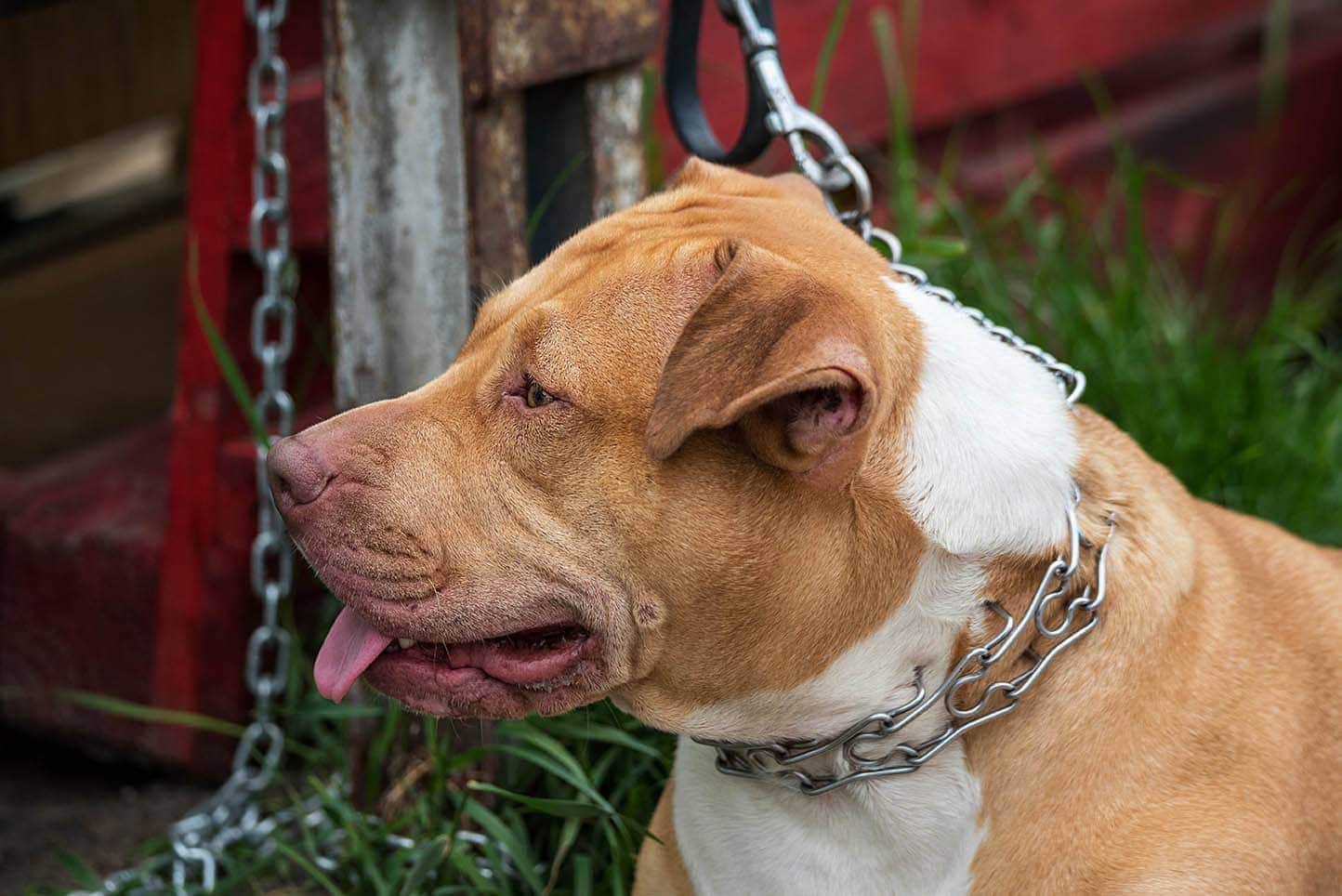Training a dog to properly walk on a leash can be a difficult task. Some dogs are super excitable, easily distracted by every scent and moving creature in their vicinity. You’ll find dogs that don’t respond to tugs on the leash, and some are so strong they can just pull you along despite your best efforts to stop them!
Thankfully, there are many tools available today to help train your dog for leash walking. Two of the most popular and effective tools are the Gentle Leader or a prong collar. Both have the same intention of teaching your dog to walk on the leash without pulling. But each of these tools will be better suited to particular pets. One might be ideal for your dog while the other could have little effect. In this article, we aim to break down the differences between these two training tools to help you determine which is the best bet for your best friend. Let’s dive into the Gentle Leader vs prong collar debate:
Overview of Gentle Leaders
As the name implies, the Gentle Leader is a collar that gently encourages your dog to stop pulling on the leash. It’s a great tool that allows you to worry less about what your dog is doing during your walk, though it’s not terribly effective at training pulling behaviors out of your dog.
How it Works
The Gentle Leader is quite different from a standard collar. Though it does go around your dog’s neck, the crux of the device is a loop that goes around your dog’s snout. The leash attaches to the bottom of this loop, and when the dog pulls on the leash, the loop around its snout tightens. This is uncomfortable for the dog, so, they generally stop pulling. As a result, you’ll have better control of your dog and they won’t tend to pull as much on the Gentle Leader as they would in a regular collar.
Gentle Leader Benefits
The best thing about the Gentle Leader is that it gives you more control without more effort. If you don’t have the time to pay complete attention to your dog and train them on your walk, the Gentle Leader gives you enough control that you can relax a bit and don’t have to focus as much on your dog’s behavior. You’ll also find that the Gentle Leader tends to calm down many dogs, making them less excitable while you’re out and about.
Drawbacks of the Gentle Leader
The biggest drawback to the Gentle Leader is that it doesn’t teach your dog proper leash behavior. It does discourage pulling, but only while the collar is on. Once you take the Gentle Leader off and switch back to a regular collar, the discouragement is no longer present, and your dog hasn’t learned to associate pulling with a negative effect. As such, they’ll most likely go back to their standard pulling behaviors.
Gentle Leaders aren’t the best choice for dogs that are strong pullers. The design of this collar puts pressure around your dog’s snout and under their eyes. If your dog pulls too hard, it could cause damage to its nose or eyes. Your dog may not understand what’s going on and could pull harder in an attempt to escape the discomfort, never realizing that the pulling is what’s causing it!
- Doesn’t cause pain
- Stops choking sounds
- Calms the dog down
- Helps to control the dog
- Pressure on the eyes and nose
- Doesn’t teach a dog to stop pulling
Overview of Prong Collars
Prong collars are a very effective training tool meant to teach your dog how to properly walk on a leash without pulling. They’re intended for short-term use only. Once you train a dog with a prong collar, the goal is to wean them off and get them walking on a regular collar, only without the pulling behavior they were exhibiting before.
How it Works
As the name implies, a prong collar has many metal prongs on it that point inward at your dog’s neck. When you deliver a short tug on the leash, these prongs tighten up and inform your dog that the behavior they just committed is undesirable. The tightening of the prongs simulates being bitten by another dog, which teaches them that a particular behavior shouldn’t be repeated. So, after a few sessions of tugging on the prong collar when the dog pulls, they’ll associate pulling with a negative reaction, thus, ceasing the pulling behavior.
It’s Not Meant for a Walking Collar
Prong collars are not intended for long-term use. If used long-term, they can cause the dog to associate walking with negative reinforcement, creating anxiety and causing the dog to no longer enjoy walks. These collars should be used only for short training intervals. Once the desired behavior is achieved, use of the prong collar should cease.

Effective but Controversial
Prong collars are exceptionally effective at teaching dogs to properly walk on a leash. However, many people think they’re inhumane because they don’t understand how a prong collar really works. That said, they can definitely cause pain if worn incorrectly. Prong collars require proper sizing and know-how to be used correctly. It’s best if prong collar training is done under the supervision of a professional. When used the right way, they’re completely safe for your dog and represent one of the best ways to prevent your dog from pulling on the leash when walking.
- Helps train out pulling behavior
- Very little pressure is necessary
- Allows for gentle correction
- Teaches dogs not to pull
- Can only be worn for short periods
- Causes pain if worn incorrectly
- Links can break apart
Gentle Leader vs Prong Collar: Which Tool is Right for Your Dog?
Though both of these tools are effective for their intended use, they’re meant to do different things. Which tool you should choose is dependent upon what you hope to achieve by using it.
Training a Dog to Stop Pulling
If you want to train your dog to stop pulling on the leash so they can be easier to walk, then a prong collar is your best bet. These devices are meant to train the correct behavior into your dog through several training sessions of short duration. Once the desired behavior is achieved, the dog should be weaned off the prong collar and walking will resume with a standard collar. Since these collars help the dog to associate pulling behavior with negative reinforcement, they’ll understand that pulling is not the desired behavior.
Easier Leash Walking Now
Sometimes, you’re not concerned with teaching your dog the proper behavior immediately. Maybe, your dog is already a decent walker but tends to get excited on certain walks. Alternatively, you might be going for a walk when you know you can’t give your dog full focus and you need a little extra help to keep them calm and under control. These situations are where the Gentle Leader shines.
You can use the Gentle Leader at any time to provide a bit more control of your pooch. Since they generally cause dogs to calm down, they’re a great tool for any time you’ll be taking your dog on a busy street or where you know they’ll be near other dogs but might get excited. The Gentle Leader will help them remain calm and allow you to keep control without having to put your full focus on the dog. However, it won’t teach your dog proper leash behavior.
For dogs that need strict training to teach them not to pull, you’ll want a prong collar instead. If your dog is a strong puller, the Gentle Leader isn’t a great choice as it could cause damage to a dog that’s pulling excessively. But for maintaining control and having an easier time on your walk, Gentle Leaders are a great tool.
Conclusion
Though both prong collars and Gentle Leaders are very effective tools, they’re meant for different uses. Prong collars are perfect for training a dog to walk properly on a leash without pulling before switching back to a regular collar. Gentle Leaders won’t train your dog the same way, but they can provide you with more control and help calm your dog down when you know you can’t give your full attention to your dog on a walk or if you’ll be in an excitable area with a lot of distractions.












